Second Pradasphere Creates Intimate Fashion and Cultural Experience in Shanghai
- Oops!Something went wrong.Please try again later.
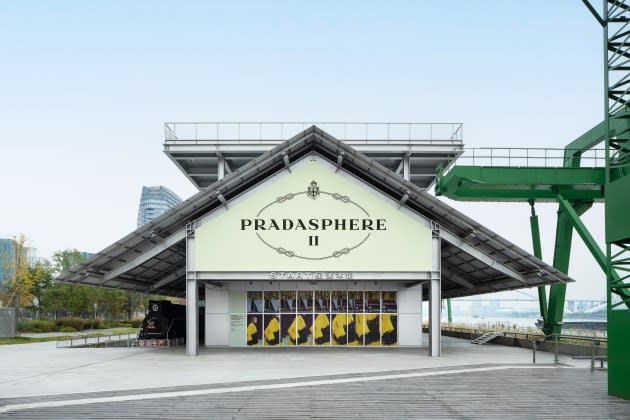
Prada‘s itinerant Pradasphere exhibition, in its second iteration, officially opened in Shanghai at the newly established Start Museum, a warehouse-like private museum located along the city’s West Bund cultural corridor.
Curated by house co-creative directors Miuccia Prada and Raf Simons, the exhibition is organized around a “magazzino,” or a working warehouse, that documents the brand’s 110 years of history and its engagement with art, architecture, culture and sport.
More from WWD
The exhibition will be open to the public free of charge from Thursday to Jan. 21. Visitors can book a slot via Prada’s WeChat Mini Program.
Simons, co-creative director since 2020, was responsible for picking out the greatest hits from the label’s 30 years of ready-to-wear history.
“If you make a lot of great fashion, it’s hard to edit it down,” said Simons, who initially started with 800 runway outfits and ended up with a tight selection of around 200 looks, choosing “by reason, not effect” and presented in chronological order.
“When Miuccia started in 1988, there was already a clear brand DNA that is still extremely important for Prada as a brand, so it was important for me to take that as a criterion, and not only the eccentricity, for example, which is clearly very important and very present as well,” Simons added.
“I try not to be impressed, to think my god…I always try to think what’s next,” Prada said after taking a walk-through of the exhibition. Working alongside Simons, Prada put her personal touch on galleries including “Cinema,” “Architecture” and “Fondazione Prada,” three culturally related spaces of the exhibition.
“Maybe you don’t believe it, but I’m crazy about China. The first time I came to China, I was 25,” Prada said of the reasoning behind launching the show in Shanghai, which she last visited in 2019 for the men’s spring 2020 collection runway show.
Michael Rock and his design studio 2×4, which also co-created the first Pradasphere exhibition at Harrods in London, among many other projects, worked closely with Prada and Simons to create a “rich and intimate” experience in Shanghai.
“The global economy of giant spectacles that are happening everywhere, including for fashion brands, creates a lot of audio, a lot of visuals, a lot of things, but the actual objects are somehow lost, so the one thing we really wanted to build into the exhibition was intimacy. You can find that you’re very close to the things in them, the rooms feel very familiar,” Rock explained.
Rock said the exhibition design was inspired by Prada’s Tuscany factory and its San Zeno warehouse, where physical ideas, such as retail concepts, are tested at full scale.
Entering the first “Magazzino” for womenswear, viewers are presented with a juxtaposition of Prada’s archival runway looks, which started with the fall 1988 collection, against the brand’s most recent, which goes up to the latest spring 2024 women’s collection. Gazing upward, cross-legged mannequins are placed at a top level, as if the past, present, and future are casting a critical look toward each other.
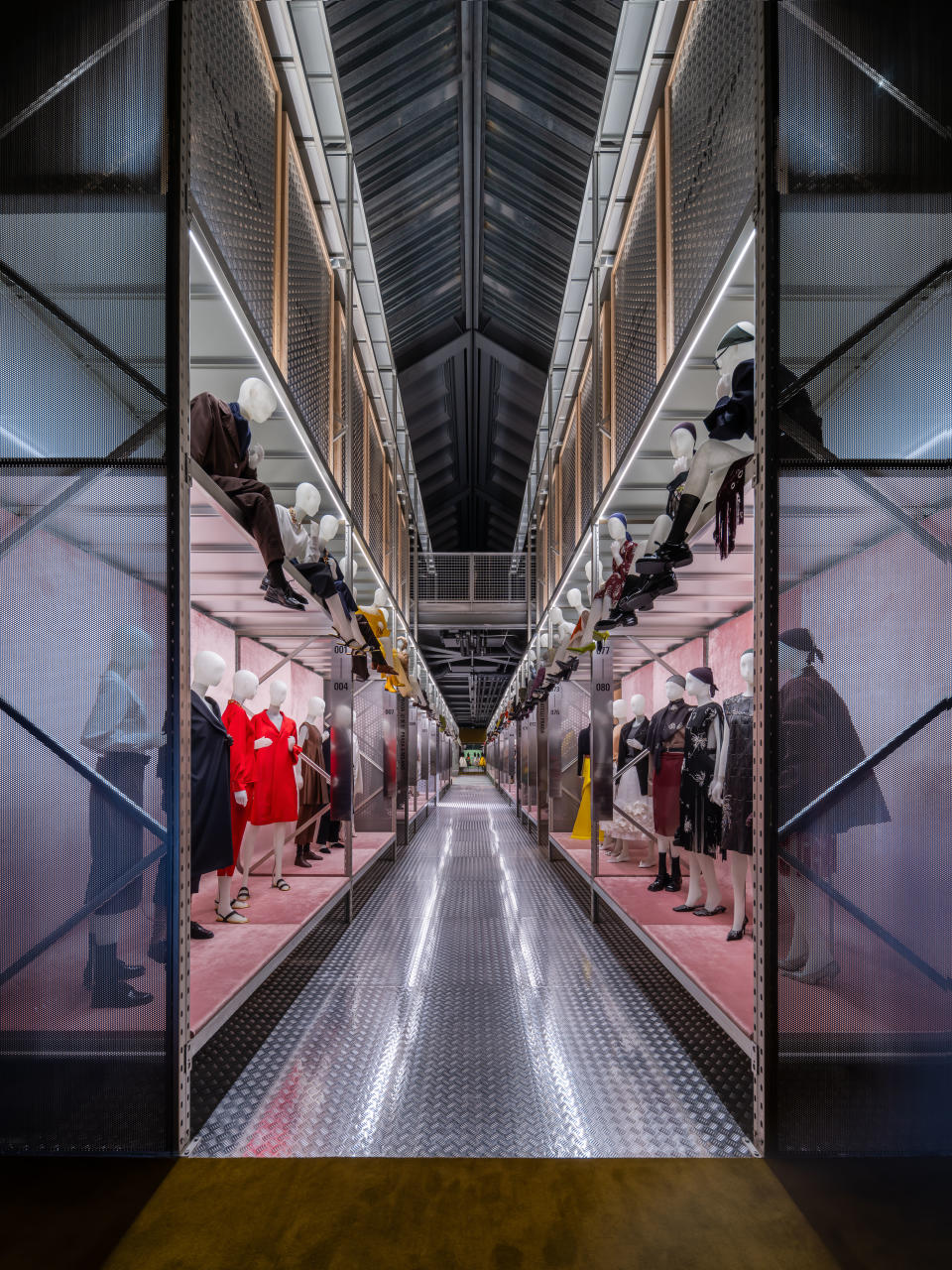
Prada’s heritage is put on display in two galleries that branch off from the main corridor.
“Fratelli Prada” recreates a corner of the original Prada store created by Mario Prada, Miuccia Prada’s grandfather. At “Prada A Milano,” the Prada nylon bags, a Miuccia creation in the ’80s, are displayed against famed editorials lensed by Albert Watson.
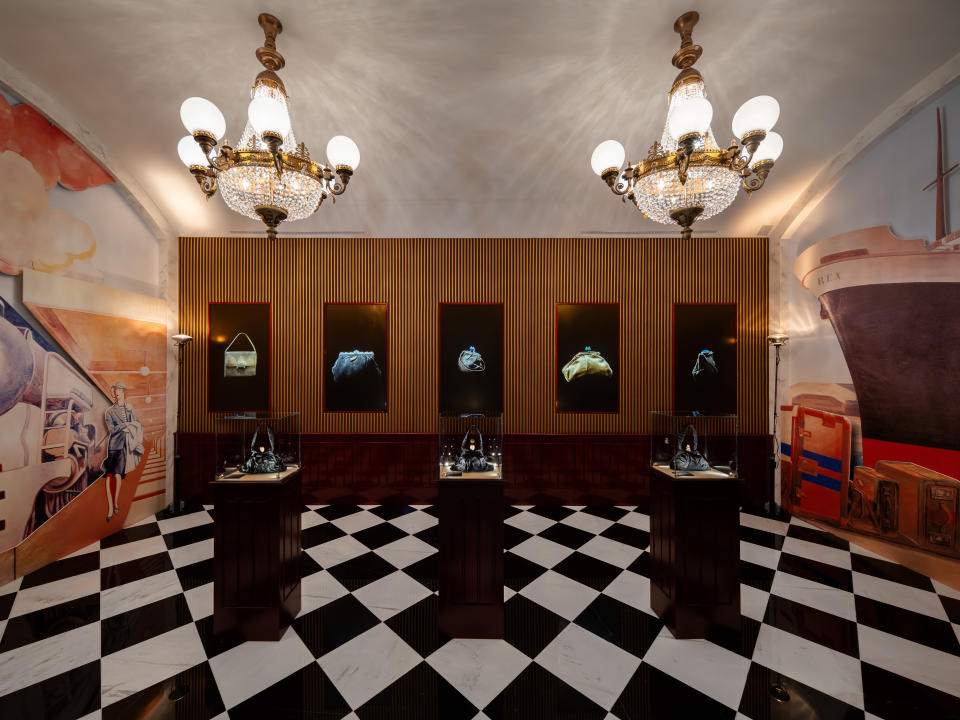
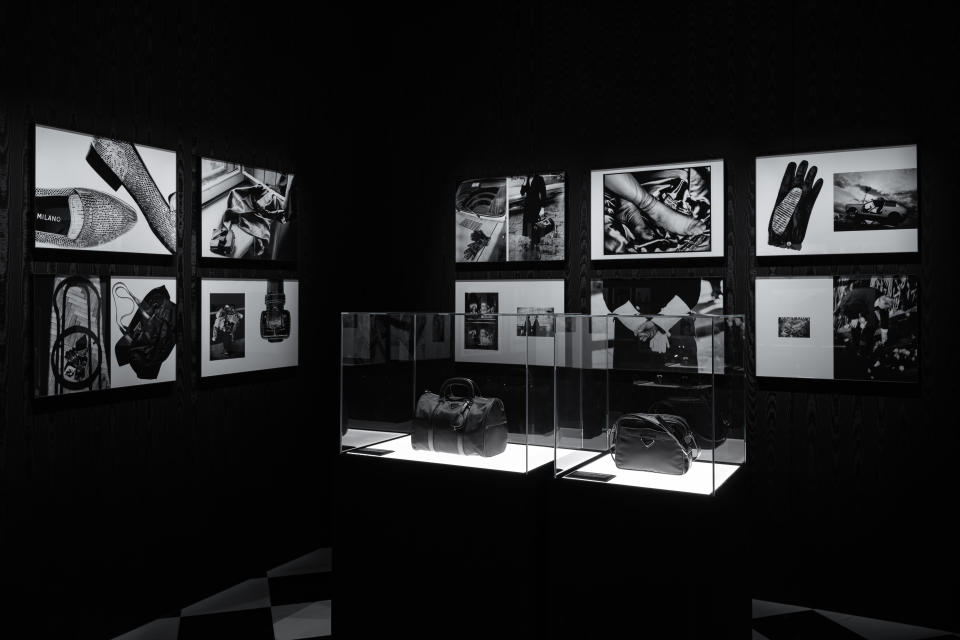
At “Gallery,” Prada collaborated with famed artist Damien Hirst on two pieces of art installations that explored unique materials. Thirty handbags from the Prada archives are displayed in glass cabinets alongside another cabinet filled with 3D-printed and -chromed replicas, which is playfully titled “Bag of Tricks.” The second Hirst creation is a submerged version of the Prada Galleria bag, a current bestseller.
After the womenswear “Magazzino,” one enters the “Green Store,” a recreation of Prada’s 1990s retail shelfing system in the now iconic pale green. Displaying 38 signature shoe designs, this section echoes a 1996 Andreas Gursky photograph that hangs at the entrance of the exhibition, which is a documentation of the original retail format.
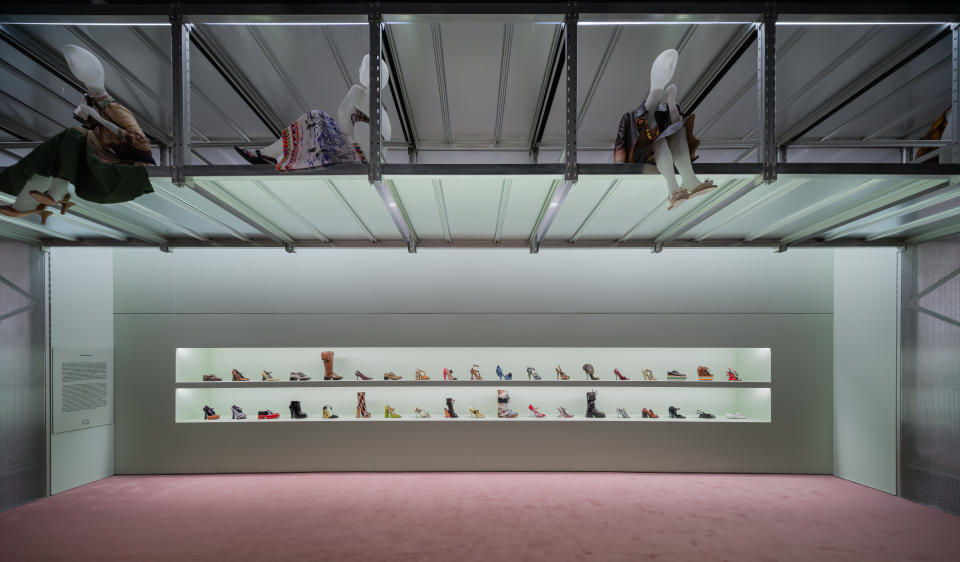
The “Green Store” leads to “Materiality,” a showcase of 20 reeditions of well-known Prada skirts made exclusively for the Shanghai Pradasphere.
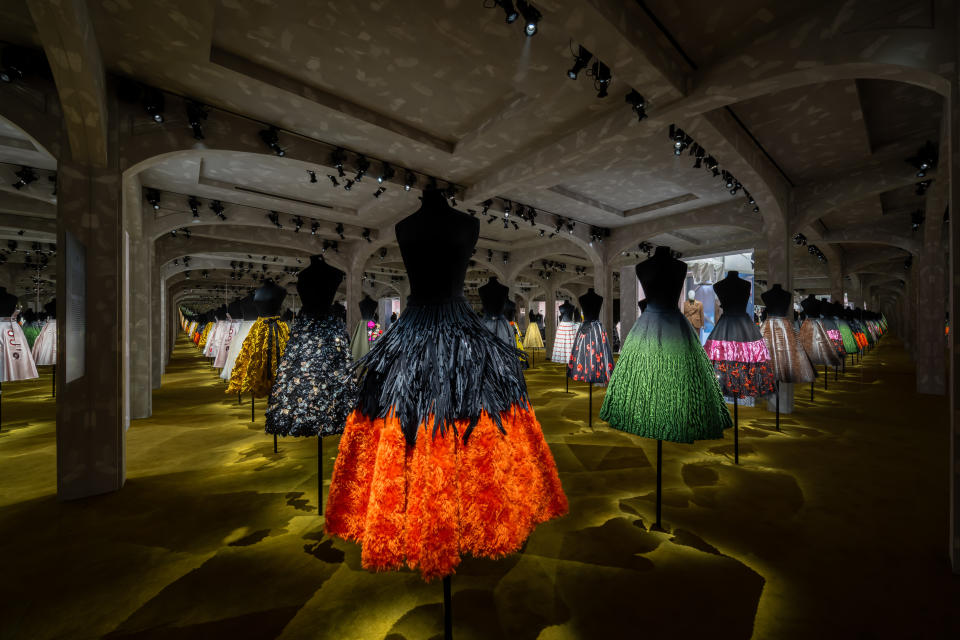
Additional galleries, including “Re-Nylon,” “Vitrine,” “Luna Rossa” and “Linea Rossa,” display items from Prada’s rich accessories collection and activewear lines.
After the menswear “Magazzino,” visitors land at the Pradasphere Caffè, where coffee, cocktails and typical snacks are served up by the brand’s hospitality team in Milan.
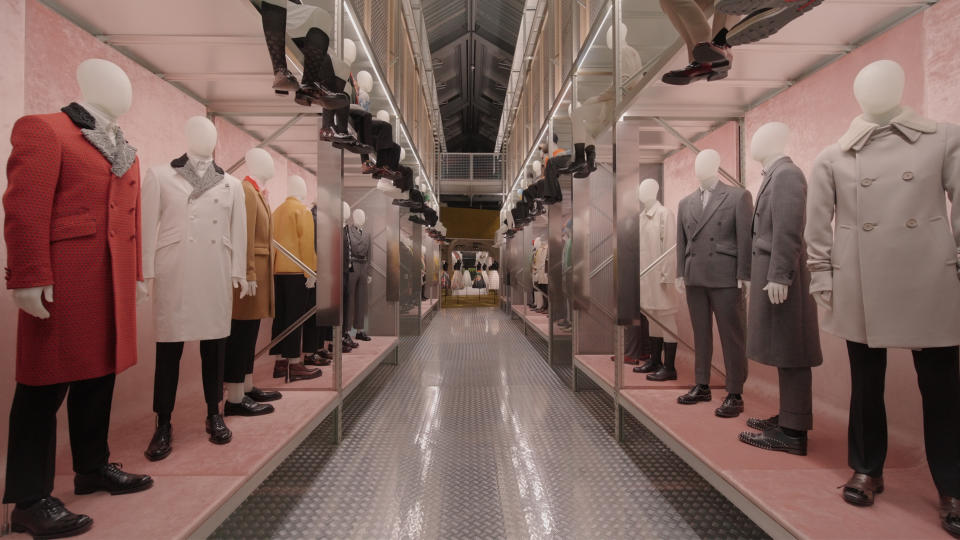
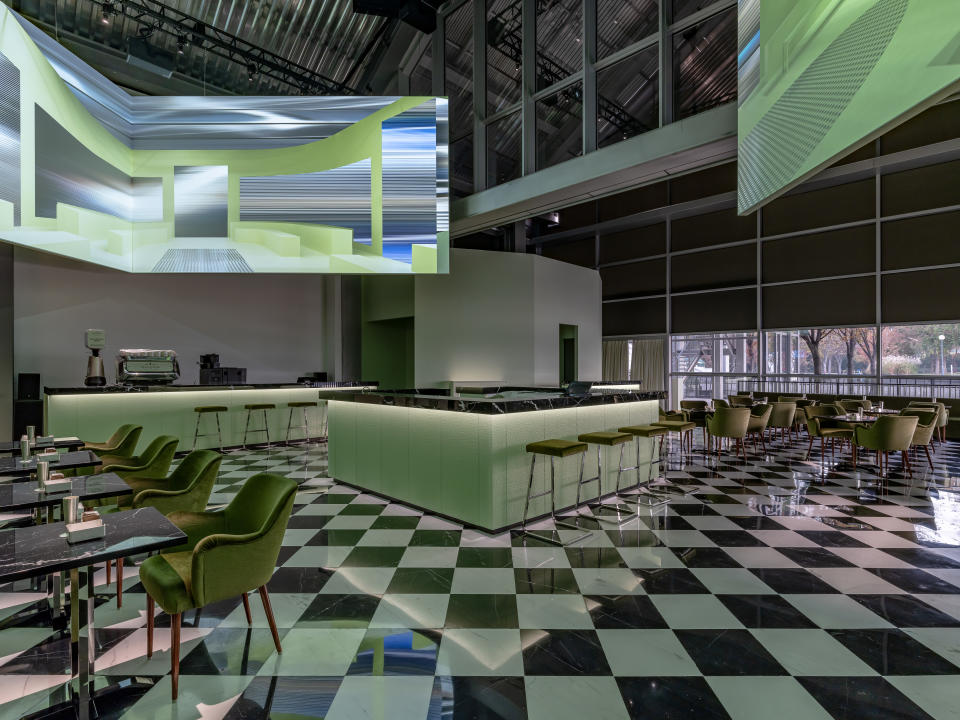
Two adjacent green-skinned trains, an artifact of 1950s China, are transformed into a workshop area displaying the Galleria bag and a gift shop.
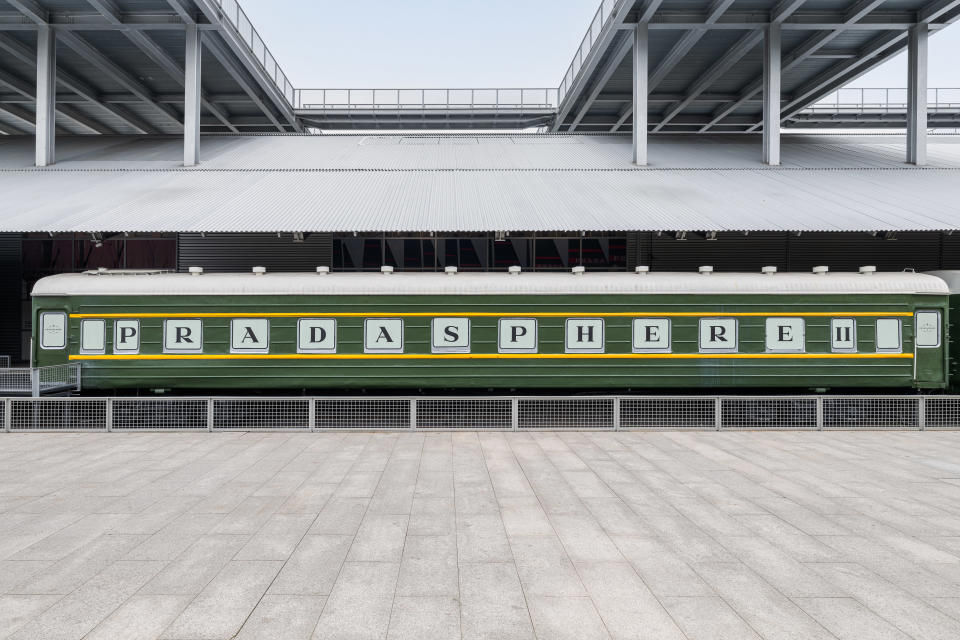
For Gianfranco D’Attis, Prada brand’s chief executive officer since last December, Pradasphere is meant to “make culture relevant” and help “redefine luxury.”
D’Attis also revealed that Prada has set an ambition to double the China business “in the mid-term future.”
“We know our customers very well, we want to entertain them, we want to offer them a better experience,” D’Attis said.
To engage with Chinese consumers with precision and surprise, Prada not only flew in VIP shoppers from all over the country for the Shanghai Pradasphere launch, but hosted special trunk shows at Rong Zhai of its reedition dresses and other pieces showcased in the exhibition.
“Between 2024 and 2025, you can expect some [retail] surprises from us,” said D’Attis, hinting at a possible Prada Caffè for the China market.
For D’Attis, who makes frequent trips to China, witnessing quickly evolving consumer preferences and a faster trend cycle in real time meant that the brand now “cares much more about training, about talent retention, about ways to award a customer’s expectation,” D’Attis said.
“We hope they will return to travel, we hope they will spend abroad…but they will continue to spend locally, they will continue to be treated like kings and queens in China. But things are moving so quickly, maybe in two months, I will have a different point of view,” D’Attis said.
The idea of hosting diffused versions of the Pradasphere exhibition are already being floated around with key landlords, according to D’Attis. “It could be an exhibition in Beijing with the Damien Hirst stand, a Luna Rossa pop-up in Chengdu, we will probably put the Fondazione Prada in Rong Zhai,” D’Attis added.
Launch Gallery: Inside the Second Pradasphere Exhibition
Best of WWD

